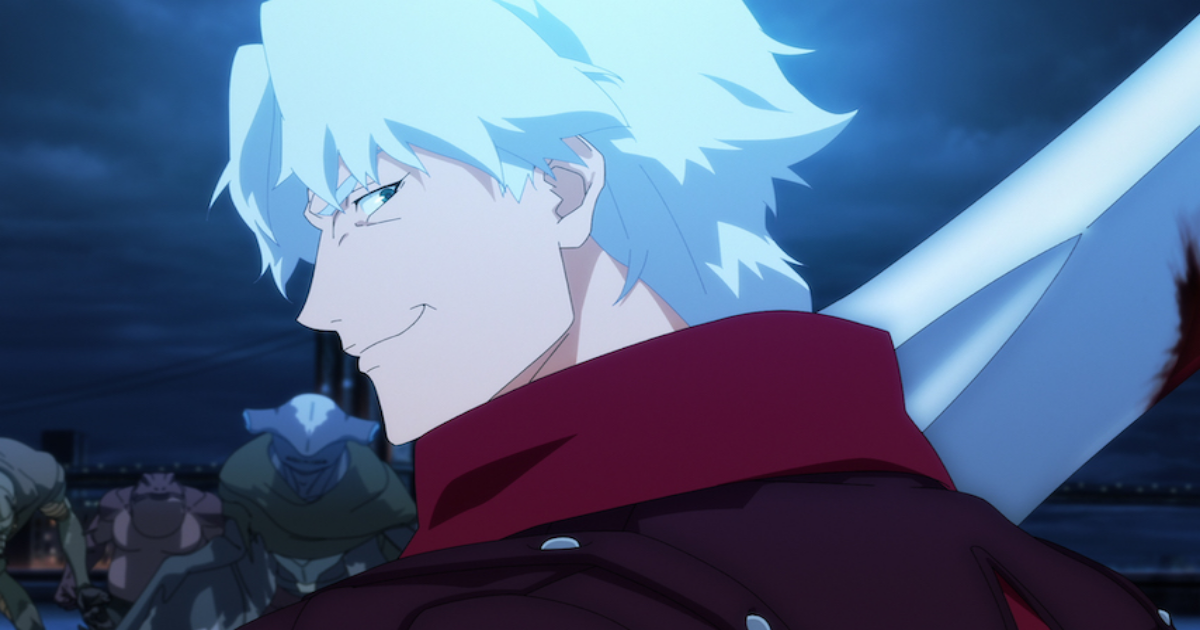Video-game adaptations have become something of a cornerstone for Netflix’s animation slate over the last few years, with standouts including Arcane, a great take on League Of Legends. And the streamer is also a rather dependable home for adult animation: Cyberpunk Edgerunners built a tragi-romantic prequel out of a then-maligned franchise; the fantasy drama of Castlevania still has legs; Captain Laserhawk: A Blood Dragon Remix was a surprisingly fun spin on a whole number of Ubisoft series. From Adi Shankar, who worked on Castlevania and Laserhawk, comes Devil May Cry, which adds its voice to the chorus (and that voice sometimes sounds like Fred Durst).
With animation from Studio Mir (The Legend Of Korra, X-Men ’97), Shankar adapts Devil May Cry for TV from a combination of sources—among them a couple of tie-in novels and manga—while folding in rogue elements and characters from across the video games. (There are plenty of nods to Devil May Cry 5, as this is the entry most viewers will likely be familiar with.) Though built from bits spanning across the franchise, this is a prequel of sorts, set before the events of the main series of games.
The show begins with a museum in Vatican City blowing up and a demonic villain named Rabbit stealing an ancient artifact. This draws the attention of DARKCOM (Dark Realm Command), an armed governmental force that combats demons. (The cowboy-hat-wearing U.S. president moans here that “all the last guy had to worry about was Saddam Hussein.”)
These two opposing forces eventually land on the doorstep of the brash young demon hunter for hire Dante (voiced by Johnny Yong Bosch), whose family history suddenly makes him an important player in a potentially apocalyptic battle. Also pivotal to the fight is Mary (unsubtly named after Virgin Mary, who assisted Dante on his trip to Hell), a character played with plenty of rage by Scout Taylor-Compton. Beyond this pair, who lend the show some sincerity, the series interestingly embraces the kind of comically broad American caricatures you’d often see in anime and Japanese video games (like the aforementioned cowboy-hat-donning leader of the free world).
Shankar noted that his take on Devil May Cry “is modeled after my memory of the world pre- and post-9/11”, and that much is plain to see in the show’s depiction of DARKCOM. Lead by the Vice President Baines (the late Kevin Conroy), a Christian zealot hellbent on exterminating every demon in sight (no matter the context), the outfit feels like a clear stand-in for the rampant and government-encouraged Islamophobia of the Bush years.
With that in mind, the series comes off like a balancing act between blunt allegory and a celebration of the pop culture of the early 2000s, when the first DMC games were released. Devil May Cry avoids a direct adaptation but it does still pay homage to the games in some fun ways, especially through its use of music. Any other show picking Limp Bizkit’s “Rollin (Air Raid Vehicle)” as its opening theme song would feel draped in layers of irony. But Shankar seems to be genuinely fond of, say, the nü-metal and emo of the era. A needle drop of Rage Against The Machine’s “Guerilla Radio” adds a little extra punch to a fist fight in an apartment; “Last Resort” by Papa Roach slathers on some gleeful cheese to a Matrix Reloaded-esque freeway chase; and, in perhaps the show’s most on-the-nose musical choice, Green Day’s “American Idiot” plays as refugees are indiscriminately bombed.
Unfortunately, there are moments when the series’ attempts to evoke the tone of the games doesn’t do it any favors. The dialogue sometimes reaches a little too hard to find its edge or gets too caught up in winking references, including one to Iron Man 3 in which a character shrieks about flying armor. Not that the series often gives a lot of time to dwell on these downsides. It moves with lightning peed, bouncing from one frenetic fight sequence to another. Studio Mir has become a go-to for many U.S. animated series, particularly those with a need for flashy and dynamic 2D action—and for good reason. The blend of gun fights and visceral sword battles is squarely in its comfort zone, and each episode of DMC boasts a wealth of creatively designed, thoughtful choreographed, and incredibly bloody action.
But fighting isn’t everything. Perhaps the show’s best episode, “The First Circle,” makes room for something different, with the French Studio La Cachette (Primal) assisting with production to create a looser style with thicker and more rounded linework. The animation stands in stark contrast to the anime-esque stylings of Studio Mir, which also experiments over this installment, which unfolds mostly without dialogue. Bolder still is the episode’s deployment of an original song by Evanescence during a montage of a family falling apart that very clearly channels an anime music video from 20 years ago. But this chapter also makes the rest of the series feel less inspired in comparison.
Even as it leaves any subtlety as a distant speck in its rear view mirror, Shankar’s spin on Devil May Cry is mostly a fun love letter to the qualities that made it popular as well as the sounds of the time when it emerged. And although there are cases when the series’ built-in edginess begins to grate a little—how many times one can stand to hear “Rollin”?—it’s relatively easy to forgive something with this much of an appealing blunt force.
Devil May Cry premieres April 3 on Netflix
